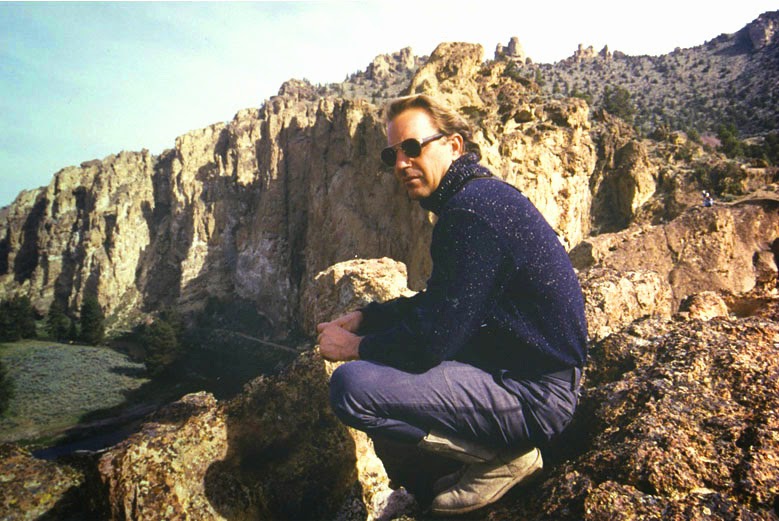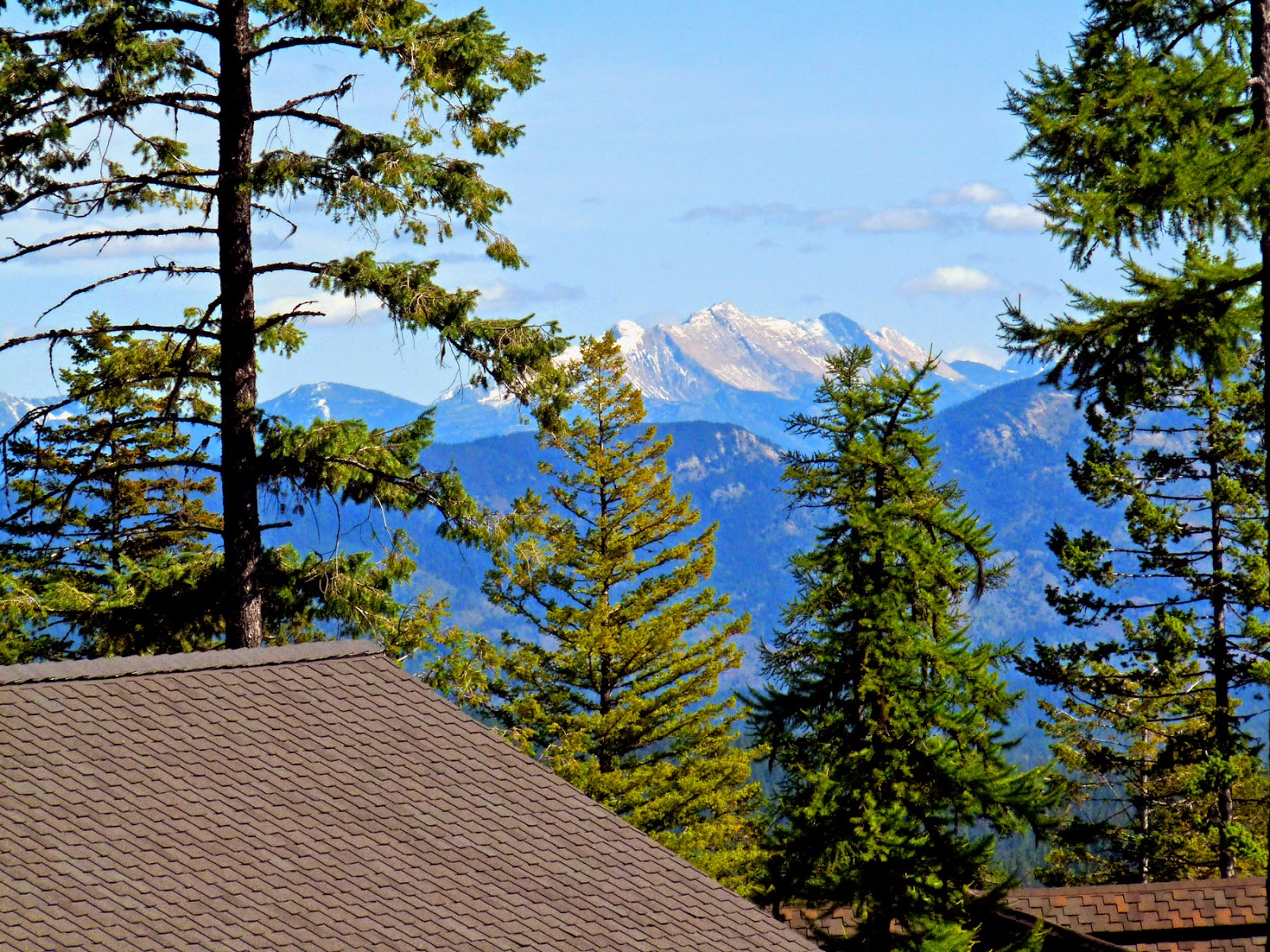Although awaiting a decision by a land use hearing
officer, the Tree Farm residential community of larger lots in the “urban
interface” just outside Bend’s westside boundary could be on the market by late
2015, one of the partners told a group of real estate professionals.
Tree Farm would encompass about 530 acres off Skyliners
Road and bordered on the west by Shevlin Park, with more than 400 acres in open
space including publicly accessible trails. Some of the lots would be along the
rim above the Tumalo Creek canyon.
The
property is owned by the Miller family, owners of Miller Lumber Company with
Charlie Miller and his sister, Connie, representing the family. Their father,
former Bend mayor Bill Miller, purchased the property in 1955 and the family last
harvested it in the late 1990s.
Kirk
Schueler, a principal in The Tree Farm LLC and veteran Bend developer, said Thursday (Nov 20)
that the development group hopes to have 30 of the propsed 50 lots ready for
sale by the Fall of next year
Besides the Miller family and Schueler, the development
group also involves West Bend Property 2, which includes Brooks Resources,
Tennant Development and Ron White. Brooks is responsible for development of
Awbrey Butte, North Rim and Black Butte Ranch and teamed with Tennant
Development, led by Mike Tennant, on the successful Northwest Crossing to the
east of the proposed Tree Farm.
Schueler is a former President and Chief Financial Officer
of Brooks Resources and in more than 17 years with at the company was involved
with Awbrey Butte, Northwest Crossing and other well-known Bend communities.
Objective not to hold lots
In bringing Tree
Farm lots to market, Schueler said,“The goal is to price them competitively. We hope to
sell them out in two years,” He cited
Tetherow across Skyliners Road, and North Rim, a Brooks Resources project on
ther north edge of Awbrey Butte, as possible pricing comparables.
But he added the strategy would likely be to wait on pricing
lots until “probably a month before release.”
Thus far CCRs and design guidelines have not been
finalized. But Schueler said that at present there is no plan to establish
time-to-build deadlines. Minimum or maximum lot sizes have also not been set
and he acknowledged that smaller homes of less than 3,000 square feet might be
a possibility.
Essentially, the project would follow “the old Awbrey
Butte model-not Northwest Crossing,” Schueler said.
 |
| Master Plan site map |
Awbrey Butte, originally developed by Brooks Resources,
was begun in the 1980s as a larger lot project by Brooks Resources and
partners. Northwest Crossing came to market in the early 2000s with mostly
smaller lots of less than 6,000 square
feet.
Schueler also
revealed that West Bend Property 2 members have an option to purchase from the
Miller family 240 acres just east of the project. This could possibly be
brought into Bend’s urban growth boundary (UGB).
The purchase would be “entirely subject to UGB,” Shueler
said. The property, now referred to only
as Northwest Crossing II, could add 750-800 housing units in a combination of
single family, townhomes and apartments. The original Northwest Crossing
currently has potential for 1,300 units at buildout.
Schueler acknowledged Bend’s protracted process to gain
state approval of an urban growth plan. Given the problems, Northwest Crossing
II could be “2, 3, 4, 5 years” out “if the UGB gets into the quagmire as it is
now,” he said.
Bend’s state mandated urban growth plan to provide land
needed for residential and commercial development was remanded in 2010 by the
Oregon Land Conservation and Development Commission. Among other issues, LCDC
said the plan did not adequately address increasing density in potential development
areas already within the existing city growth boundary.
County hearing officer hears testimony
Schueler’s
presentation at AmeriTitle in Bend was followed that evening by a public
hearing before county hearing officer Karen Green. Although recommended for
approval by the county planning staff, several groups and individuals have
raised questions about Tree Farm.
The
county staff findings specifically address the developers application for a
cluster development for 10 lots on 109 acres, although that segmeent was
reviewed concurrently with the other four parcels which would have an additional
40 lots.
Among
the issues Green has under review are
impacts on wildlife habitat, traffic and fire protection and suppression.
At the Tuesday evening hearing in response to Green’s
questions, representatives for the
developers addressed a number of issues:
- confirmed there were no plans to later bring
open space in Tree Farm into the UGB
- said that
deer habitat and migration corridors would not be adversely
affected, noting that most deer would migrate along the Tumalo Creek
corridor
- maintained that the project would be a leader in
Oregon for establishing National Fire Protection Association standards of
fire protection, and that adequate water in case of fire would be
supplemented by cisterns.
- said that it was unlikely that there would be
“industrial activity” such as timber harvest on adjacent Forest Service
land, which is mostly used for biking and hiking trails at present.
Green said she would keep the record
open for additional written comments and planned another site visit.
County staff staff report noted the planners had sent
notice of the proposed project to landowners within 250 feet of the project but
received only two comments.
One
of these were joint comments from two persons favoring the developer plans for
open space, clustering to prevent sprawl and extension of trails access north
to connect with Shevlin Park.
An
opponent expressed concern that affordable housing is a need in Bend and that
adequate home sites are currently available in other projects for, “the most
fortunate of us.” Traffic congestion and the potential for contributing to,
“another housing bubble..” were also mentioned in the response.
Last
minute comments were also filed by Central Oregon Land Watch, often an opponent
of growth and new development. Those were not available for the public
attending the hearing.





















